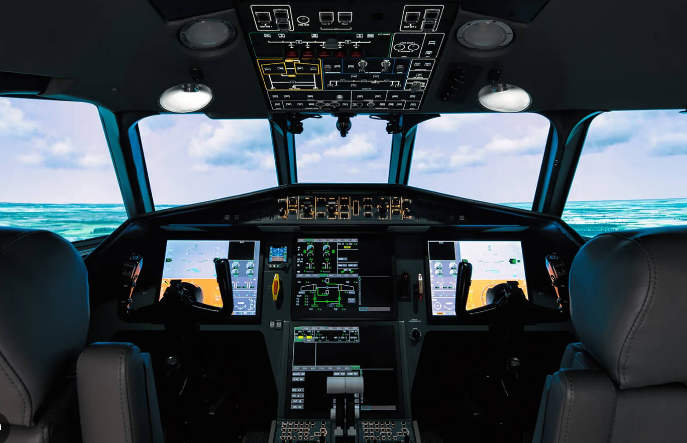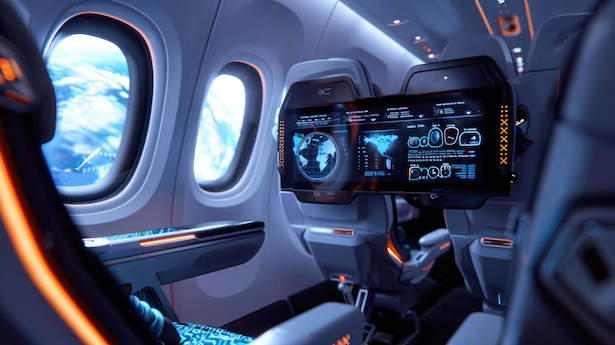In the fast-evolving world of aviation, printed circuit boards (PCBs) play a critical role in ensuring the safety, efficiency, and reliability of aircraft systems. One of the most exciting advancements in this field is the integration of new interfaces on PCBs for airplanes, particularly those leveraging the 802.3 standard Ethernet technology. These innovations are transforming support for systems and flight control while optimizing energy usage. In this blog, we'll explore how these new interfaces are shaping the future of aviation electronics, diving deep into their technical benefits and practical applications.
What Are New Interfaces on PCBs for Airplanes?
New interfaces on PCBs for airplanes refer to the advanced connection technologies integrated into circuit boards that facilitate communication between various aircraft systems. These interfaces are designed to handle high-speed data transfer, support critical flight control systems, and improve energy efficiency. A key player in this space is the 802.3 standard Ethernet technology, a widely recognized protocol for wired networking that offers robust and scalable solutions for modern avionics.
By adopting these cutting-edge interfaces, aircraft manufacturers can enhance data transmission speeds, reduce latency in flight control systems, and lower power consumption. This blog will break down the specifics of these technologies and their impact on aviation, ensuring you have a clear understanding of their importance.
The Role of 802.3 Standard Ethernet Technology in Aviation PCBs
The 802.3 standard Ethernet technology, developed by the Institute of Electrical and Electronics Engineers (IEEE), defines the physical layer and data link layer for wired Ethernet networks. This standard has been a cornerstone of networking for decades, and its application in aviation PCBs marks a significant leap forward. Unlike traditional communication protocols used in aircraft, such as MIL-STD-1553, Ethernet offers higher bandwidth and scalability, making it ideal for modern avionics systems.
In practical terms, the 802.3 standard supports data rates ranging from 1 Mb/s to 400 Gb/s, depending on the specific implementation. For airplanes, where real-time data transfer is critical, even lower-speed implementations like 100 Mb/s or 1 Gb/s provide substantial improvements over older systems. This technology enables seamless communication between sensors, actuators, and central processing units, ensuring that flight control systems operate with minimal delay.
One notable advantage of the 802.3 standard is its compatibility with full-duplex operation, which allows simultaneous data transmission and reception. This capability reduces the risk of data collisions and enhances the reliability of critical systems. Additionally, the standard supports various physical media, including copper cables and fiber optics, offering flexibility for aircraft designers to choose the best option based on weight, cost, and performance needs.

Support for Systems and Flight Control with Ethernet Interfaces
Flight control systems are the backbone of any aircraft, responsible for managing everything from navigation to autopilot functions. The integration of new Ethernet-based interfaces on PCBs provides unparalleled support for these systems by enabling faster and more reliable data exchange. Let's explore how this technology enhances flight control and other critical systems.
1. Real-Time Data Processing: Modern aircraft rely on real-time data to make split-second decisions. For instance, sensors monitoring airspeed, altitude, and engine performance send data to the flight control unit. With Ethernet interfaces supporting speeds up to 1 Gb/s or higher, this data reaches the processing unit with latency as low as a few microseconds, ensuring timely responses.
2. Scalability for Future Upgrades: As aircraft systems become more complex, the need for scalable communication solutions grows. The 802.3 standard allows for easy upgrades to higher data rates without requiring a complete overhaul of the PCB design. This scalability ensures that aircraft can adapt to new technologies over time, extending their operational lifespan.
3. Redundancy and Reliability: Aviation demands redundancy to ensure safety. Ethernet interfaces on PCBs can be configured to support multiple data paths, so if one connection fails, another can take over. This setup minimizes the risk of system failures during flight, a critical factor for maintaining passenger and crew safety.
These benefits directly translate to improved performance in flight control systems, allowing for smoother operations and enhanced safety. By leveraging the 802.3 standard, aircraft can handle the increasing data demands of modern avionics, from advanced navigation systems to in-flight entertainment networks.

Energy Usage Optimization with New PCB Interfaces
Energy efficiency is a top priority in aviation, where every watt of power saved can reduce fuel consumption and lower operating costs. New interfaces on PCBs, particularly those using the 802.3 standard Ethernet technology, contribute significantly to optimizing energy usage in aircraft systems. Here's how these advancements make a difference.
1. Lower Power Consumption: Traditional communication protocols often require more power to transmit data over long distances within an aircraft. Ethernet interfaces, especially those using fiber optic connections, reduce power consumption by up to 50% compared to older electrical interconnects. This efficiency is crucial for large aircraft with extensive wiring networks.
2. Reduced Heat Generation: High-speed data transfer can generate heat, which requires additional cooling systems that consume energy. Modern Ethernet interfaces on PCBs are designed to minimize heat output, with some implementations achieving power dissipation rates as low as 0.5 watts per port for 1 Gb/s connections. Less heat means less need for active cooling, further saving energy.
3. Lightweight Design: Energy usage isn't just about electrical power; it also relates to the weight of components. Ethernet technology often uses lightweight fiber optic cables instead of heavy copper wiring, reducing the overall weight of the aircraft. A lighter aircraft consumes less fuel, contributing to energy savings over long flights.
By focusing on energy-efficient designs, these new PCB interfaces help airlines meet sustainability goals while maintaining high performance. The combination of lower power draw, reduced heat, and lighter materials creates a win-win scenario for both operational efficiency and environmental impact.
Challenges in Implementing New Interfaces on Aviation PCBs
While the benefits of new interfaces on PCBs for airplanes are clear, their implementation comes with certain challenges. Understanding these hurdles is essential for engineers and manufacturers looking to adopt this technology.
1. Harsh Environmental Conditions: Aircraft operate in extreme conditions, from high altitudes with low temperatures to turbulent environments. PCB interfaces must be designed to withstand vibrations, temperature fluctuations ranging from -40°C to 85°C, and electromagnetic interference (EMI). Ensuring the 802.3 standard Ethernet technology functions reliably under these conditions requires rigorous testing and specialized materials.
2. Certification and Compliance: Aviation is a highly regulated industry, and any new technology must meet strict safety and performance standards set by organizations like the Federal Aviation Administration (FAA) and the European Union Aviation Safety Agency (EASA). Certifying Ethernet-based PCBs for use in flight control systems can be a lengthy and costly process.
3. Integration with Legacy Systems: Many aircraft still rely on older communication protocols. Integrating new Ethernet interfaces with these legacy systems poses a technical challenge, often requiring custom converters or hybrid designs to ensure compatibility without compromising performance.
Despite these challenges, the long-term advantages of adopting new PCB interfaces far outweigh the initial difficulties. With proper planning and engineering, these obstacles can be overcome to deliver safer and more efficient aircraft.
Future Trends in PCB Interfaces for Aviation
The aviation industry is on the cusp of even more transformative changes as PCB interface technology continues to evolve. Here are some trends to watch in the coming years:
1. Higher Data Rates: As the 802.3 standard continues to advance, we can expect support for even higher data rates, such as 800 Gb/s, to become feasible for aviation applications. This will enable more sophisticated systems, such as AI-driven flight control and predictive maintenance.
2. Increased Use of Fiber Optics: Fiber optic connections, already a part of Ethernet technology, will become more prevalent due to their lightweight nature and immunity to EMI. This shift will further enhance energy usage optimization and data reliability.
3. Miniaturization: As aircraft systems demand more functionality in smaller spaces, PCB interfaces will continue to shrink in size. Smaller components with the same or better performance will allow for more compact and efficient designs.
These trends indicate a bright future for PCB technology in aviation, with new interfaces playing a central role in driving innovation and efficiency.

Why Choose Advanced PCB Solutions for Aviation?
For engineers and manufacturers in the aviation sector, adopting new interfaces on PCBs offers a competitive edge. These technologies not only improve the performance of flight control systems but also contribute to significant energy savings. By partnering with a trusted PCB provider, you can access custom solutions tailored to the unique demands of aviation, ensuring compliance with industry standards and optimal performance in the field.
Whether you're designing systems for commercial airliners or military aircraft, the integration of 802.3 standard Ethernet technology into PCBs provides a reliable foundation for future-proofing your designs. With a focus on high-speed data transfer, robust support for systems and flight control, and optimized energy usage, these interfaces are a game-changer for the industry.
Conclusion
New interfaces on PCBs for airplanes are revolutionizing the aviation industry by leveraging the power of 802.3 standard Ethernet technology. From providing critical support for systems and flight control to optimizing energy usage, these advancements address some of the most pressing challenges in modern aircraft design. As the technology continues to evolve, we can expect even greater improvements in data speeds, reliability, and efficiency, paving the way for safer and more sustainable air travel.
By understanding and embracing these innovations, engineers and manufacturers can stay ahead of the curve, delivering cutting-edge solutions that meet the demands of today's aviation landscape. For those looking to explore custom PCB designs for aviation applications, the possibilities are endless with the right expertise and technology at hand.



